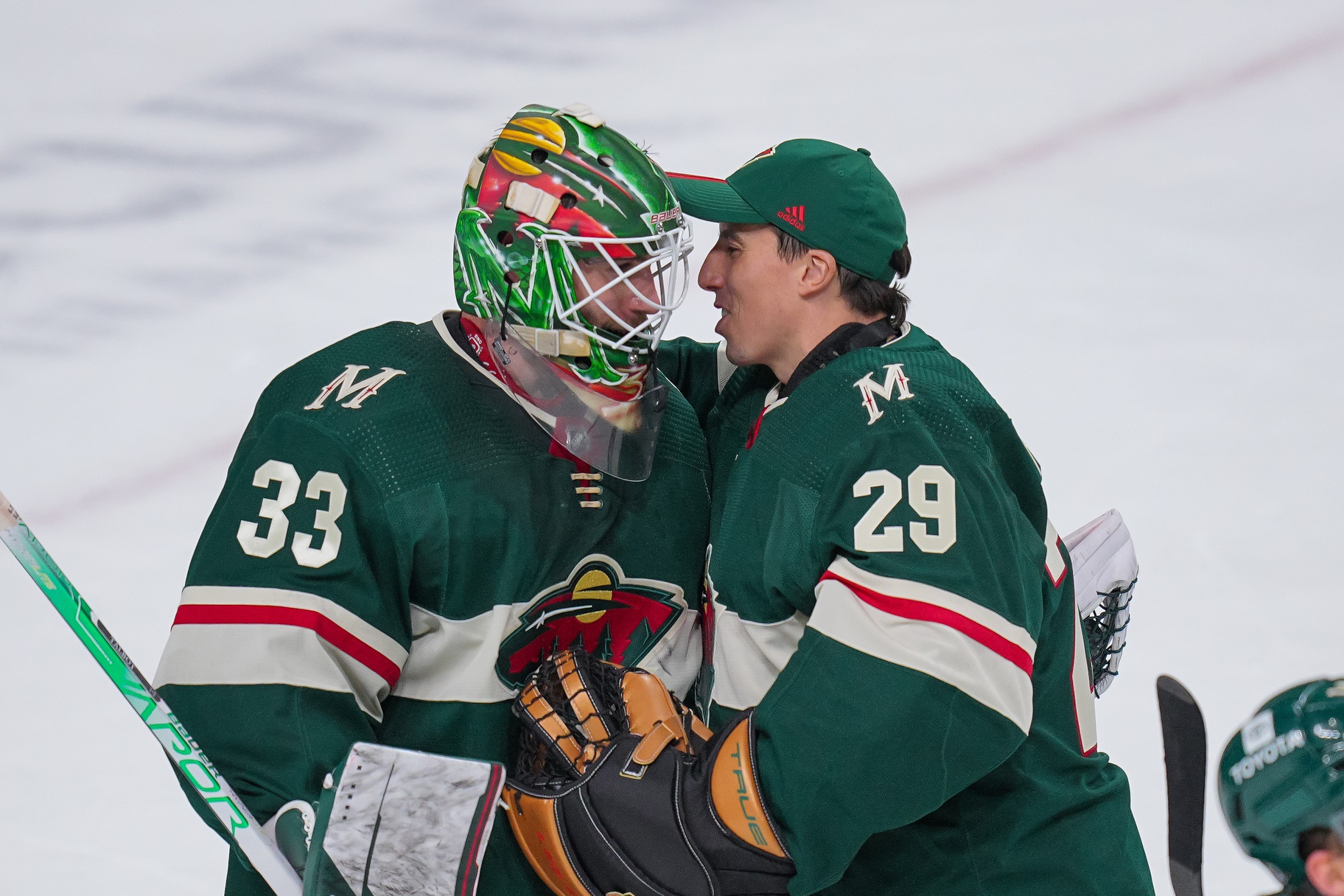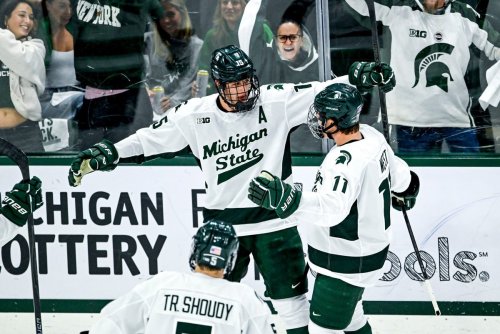
The Minnesota Wild were in an interesting position heading into this season’s trade deadline. They have shown signs of contention this season. However, glaring issues have developed throughout the season, namely goaltending and a lack of physicality on the back end. That was especially evident in their fall from grace at the beginning of the new calendar year.
That's why the Wild had a critical decision to make. The organization didn't want to touch their emerging top prospect pipeline or valuable picks, which was wise. But they also wanted to maximize what could potentially be one last run with the current roster because of the looming cap troubles ahead.
Ultimately, Minnesota felt their roster is close enough to make a deep run and there’s definitely an argument for that. The Wild made an investment at the trade deadline, maximizing their ceiling by solving their crucial needs at the deadline. It all started with the one-for-one transaction that sent Nico Sturm to Colorado and brought potential in Tyson Jost to Minnesota.
The rationale for the hockey trade is well-documented. And there's no doubt that the Wild got better down the middle with the speed and skill Jost brings to the lineup, even if Sturm has the edge in the underlying numbers this season.
Adding Nicolas Deslauriers to the mix provides Minnesota with more sandpaper and physicality. While a third-round pick is a steep cost, especially given what other forwards went for at the deadline, Deslauriers brought an added element to the roster. The 31-year-old is already making an impact. In his Wild debut against the Vegas Golden Knights, he not only scored a huge goal but brought an incredible physical presence with six hits that electrified the crowd.
However, the Wild's biggest splash at the trade deadline was sending a conditional second-round pick to the Chicago Blackhawks for future Hall of Fame goaltender Marc-Andre Fleury.
The Wild's major need at the trade deadline was getting an upgrade between the pipes. Their defense is top-tier, only the Boston Bruins best the Wild's 2.17 expected goals against per 60 mark at 5-on-5. But Cam Talbot was not getting it done in goal. The 34-year-old has a .910 save percentage and has allowed over 14 goals above expected through 39 games.
It's not a matter of whether or not Fleury is an upgrade. Rather, it's how much of an upgrade he will be moving forward. Yes, he has struggled massively this season in Chicago, allowing 11 goals above expected. However, he's also one year removed from his Vezina-caliber winning season. He can be a monster in the playoffs, so there's no doubt that he was worth the risk. The second-round pick Minnesota sent to Chicago turns into a first-rounder if the Wild win the first two rounds. But, in that case, it will have been completely worth it. There's a chance Minnesota could re-sign him this summer, too.
In a subsequent move, the Wild traded goaltender Kaapo Kahkonen and a fifth-round pick to the San Jose Sharks for defenseman Jacob Middleton. With the possibility of Jesper Wallstedt being on Minnesota's tandem in 2023-24, there wasn't much of a future for Kahkonen in goal. It's disappointing because he made strong strides this season, but there was no reason to carry three goalies the remainder of the season.
The Wild wisely traded Kahkonen for a defenseman, an area of need with Alex Goligoski struggling. The Middleton trade could serve as a prelude to Goligoski's departure this summer. It would make sense since Goligoski has struggled in the second half of the season and his departure would leave an opening on the left side. Middleton, who recently turned 26, will be an RFA this summer and fills a lot of boxes.
Middleton is a typical stay-at-home defender who will bring toughness and reliability to the backend. He's been a development success with the Sharks and ended up being Erik Karlsson's go-to defensive partner. The pair controlled 55 percent of the expected goal share at 5-on-5 in 450 minutes this season, and they outscored the opposition 16-11.
Middleton won't drive the results of a pair like Spurgeon does. But pairing him on the left side with Spurgeon or Dumba in a top-four role could work as it did with him and Karlsson in San Jose. The Wild will have the best chance to re-sign him because he's under team control this summer. They could also choose to move him in the offseason because there were plenty of suitors for the steady defender in the first place. It gives them another option this summer as they construct a roster that can be sturdy enough during the next three years.
The Wild's trade deadline investment sets up a very intriguing offseason with many critical decisions. The most important one will be Kevin Fiala's fate. He will be an RFA and has proven his star potential once again this season. But these moves didn't help his likelihood of staying -- the cap situation will get even tighter next season because of the dead cap from the buyouts.
But if there's one thing for sure, it's that the Wild's investment at the deadline was a well-calculated plan that elevated their chances of making a deep run in the postseason, and they did it without giving up their first-round pick straight up.
All Data Via Evolving-Hockey, Natural Stat Trick and Hockey-Reference
Think you could write a story like this? Hockey Wilderness wants you to develop your voice, find an audience, and we'll pay you to do it. Just fill out this form.







Recommended Comments
There are no comments to display.
Join the conversation
You can post now and register later. If you have an account, sign in now to post with your account.
Note: Your post will require moderator approval before it will be visible.